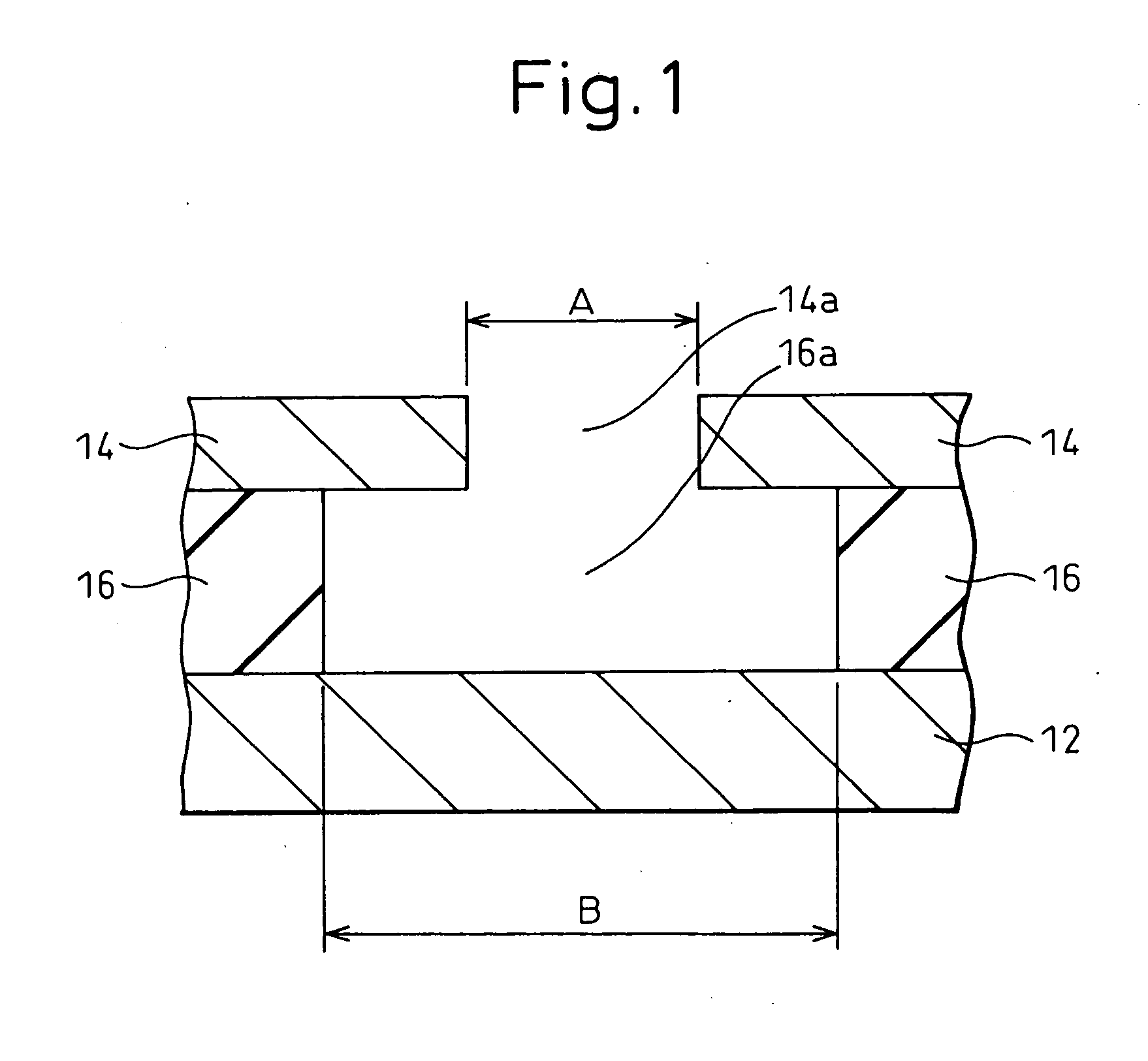Cavity electrode structure, and sensor and protein detection device using the same
a protein detection and cavity electrode technology, applied in the field of cavity electrode structure, can solve the problems of inability to use the introduction of fluorescent labels, requiring comparatively elaborate equipment, and difficult to precisely form electrodes with gap of several nanometers to several tens of nanometers
- Summary
- Abstract
- Description
- Claims
- Application Information
AI Technical Summary
Benefits of technology
Problems solved by technology
Method used
Image
Examples
embodiments
[0033] Although the following provides a more detailed explanation of the present invention with reference to its embodiments, the present invention is not limited to these embodiments.
[0034] In this embodiment, a protein detection device is explained that uses DNA attached with biotin that specifically binds to avidin protein.
[0035] A lower electrode layer 52 made of gold (Au), an insulating layer 54 made of SiO2, and an upper electrode layer 56 made of gold (Au) are sequentially formed (FIG. 4A) on a silicon substrate (not shown). The thickness of insulating layer 54 is made to be a thickness corresponding to the length of the DNA, for example 10 nanometers, that serves as the bridging member between the opposing electrodes. The thicknesses of lower and upper electrode layers 52 and 56 are made to be, for example, 0.1 micrometers and 0.1 micrometers, respectively. Next, as shown in FIG. 4B, a hole 56a (having a diameter of, for example, 50 micrometers) is formed by, for example,...
PUM
 Login to View More
Login to View More Abstract
Description
Claims
Application Information
 Login to View More
Login to View More - R&D
- Intellectual Property
- Life Sciences
- Materials
- Tech Scout
- Unparalleled Data Quality
- Higher Quality Content
- 60% Fewer Hallucinations
Browse by: Latest US Patents, China's latest patents, Technical Efficacy Thesaurus, Application Domain, Technology Topic, Popular Technical Reports.
© 2025 PatSnap. All rights reserved.Legal|Privacy policy|Modern Slavery Act Transparency Statement|Sitemap|About US| Contact US: help@patsnap.com



